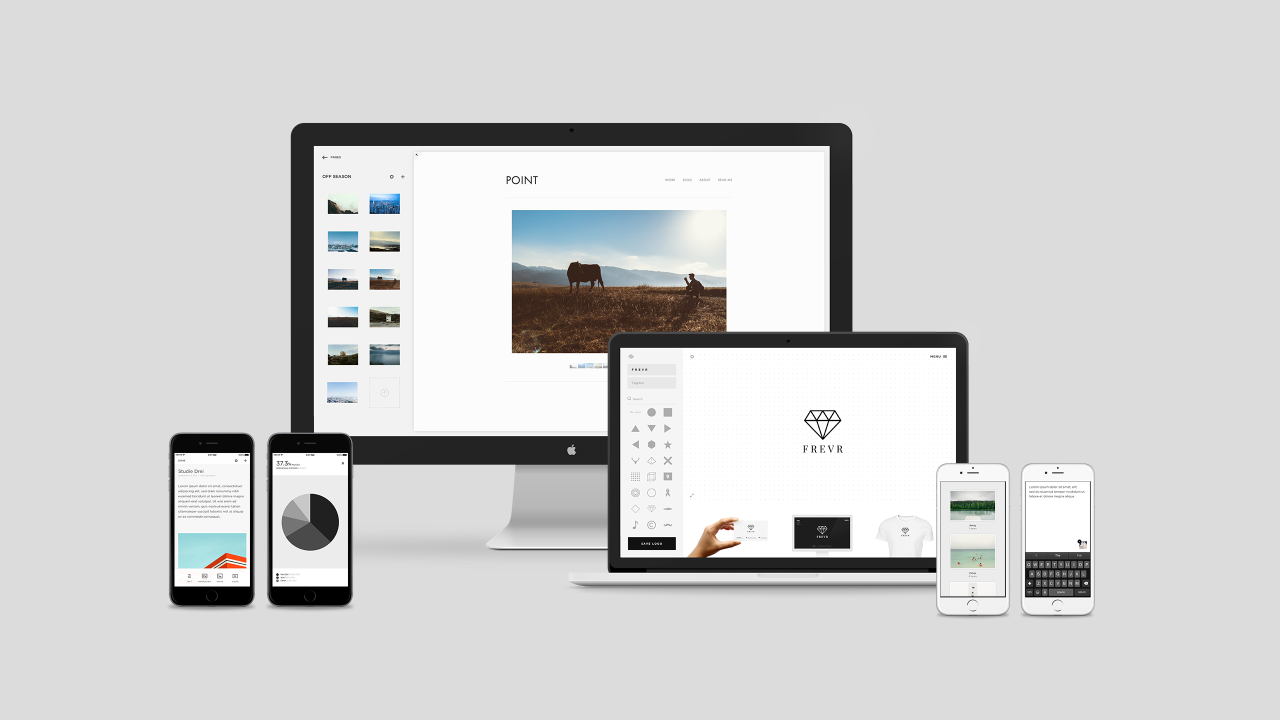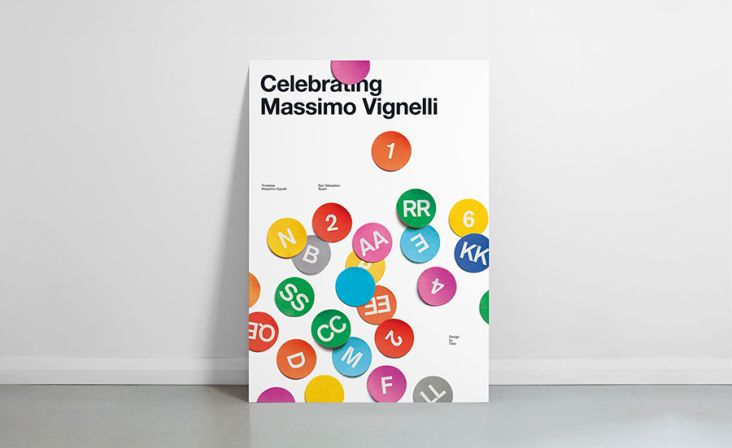Six easy steps to create a successful online portfolio
When you work in the creative industries, an online portfolio is an essential tool for promoting your work to potential clients or employers.

Image courtesy of Squarespace
You’ll want to make sure you show off your best work and present yourself as professionally as possible. It can take a lot of time and effort to perfect, but it’s well worth the investment.
So how do you build a web-based portfolio that will lead to success? Creative Boom has teamed up with the website-building tool Squarespace to provide six easy steps to help you get there.
1. Keep it simple and remember your goals
First impressions do count. When someone lands on your portfolio site, you’ll want them to feel compelled to stay and, ultimately, decide to hire you.
In which case, you’ll need to ensure several vital things. Firstly, you’ll want your portfolio design to be simple and elegant. Don’t over-complicate things by trying to be clever or making your landing page too busy. Just keep the design as clutter-free as possible.
Next, you’ll want to make it instantly clear to your visitor what your portfolio is about. Think about whether it sufficiently answers the following questions that clients will ask:
- Who is this person?
- Where are they based?
- What work have they done before?
- Are there any examples of their recent work?
- Which other brands have they worked for?
- How much do they charge? What’s their day rate?
- How do I get in touch?
With the above in mind, make sure your portfolio is easy to navigate with definite goals in each section. Keep the navigation simple and stick to the tried and tested formula of content, including Home, About, Latest Work, News (or Blog), Contact.
Consider adding a simple introduction to describe who you are and what you do. Just keep it short and sweet, leaving the longer description for your About page. Or you could even add a snappy strap-line below your name or logo, immediately communicating your creative discipline.
 displays a good range of his latest work on his own portfolio](https://www.creativeboom.com/upload/articles/bf/bfc697dc114c00d235a88c4b551c81ea74218417_944.png)
Darren Booth displays a good range of his latest work on his own portfolio
2. Present only your best work and keep it varied
Take a step back and be ruthless about what you present in your online portfolio. You know the old saying ‘You’re only as good as your last piece of work’? Well, that applies here. Get a second opinion, if you’re not sure which projects to include.
When it comes to deciding how many to showcase, it’s worth remembering that clients don’t need to see everything you’ve ever done. They’ll only want to see your best work. Just make sure you feature a varied range to show off your creative diversity and cater to different needs.
And if you’re showing off different projects, it’s a good idea to categorise and label your work. It allows visitors to easily find relevant projects that relate to the services they’re looking for.
If you’re struggling to fill your portfolio, then you should include non-client work, such as your little side projects to help demonstrate your flair and creativity.
One final point. An online portfolio should be a living and breathing entity. It should move with the times and include any new work wherever possible. Keep your portfolio fresh and exciting by continually updating it and telling potential clients what you’ve recently been up to.
3. Use quality images and tell the story
A great project won't have the same impact if you’re not displaying it in the best possible light. Bite the bullet and take some time to create high-quality images that show off your work. You know the kind of images we mean. For website designs, you’ll want to mock up a professional photo of an iPad or iMac in an appealing setting. If it’s a brand identity project, you’ll also want to display all the materials in situ.
The other reason why you’ll need great imagery is for your PR purposes. Because what if a blog like Creative Boom wants to write about you and share your work? It’s like killing two birds with one stone, so make sure you create fantastic imagery. One little extra tip: avoid white backgrounds! Blogs and online magazines hate them. Instead, use a light coloured background that suits each project.
Next step is to provide some context to your work. Add detailed descriptions to each project and include things like the client brief and the process you went through to come to a successful outcome. You might also want to add any benefits that your client enjoyed as a result of your hard work. Don’t forget to include a link to any relevant websites.
](https://www.creativeboom.com/upload/articles/1b/1b439ce579d04f33db9bed7922607a1787859a91_944.png)
An example of a portfolio template from Squarespace, called Flatiron
4. Add an About page and write a compelling bio
There is nothing more frustrating than landing on a portfolio site only to discover there’s no About page. Even worse is when that section only includes a list of recent clients or exhibitions, without any description of the person or agency in question. Add an About section and write an engaging and compelling bio that sells yourself, your skills and experience.
When drafting this copy, don’t try and be clever by using flowery language and fluffy expressions. You’ll only confuse your audience. Keep it conversational and straightforward yet factual. Avoid too many adjectives and write as though you’re talking to a friend, describing clearly who you are, what you do, where you do it, why you do it and how you do it. Be humble yet confident in your abilities. Be approachable, not pretentious. Read back your final bio to a friend and get their honest opinion.
Don’t forget to demonstrate all-round experience, rather than just pointing out your creative skills. Yes, you’re good at graphic design, but you’re also an excellent communicator, can meet deadlines and offer dependable consultancy services, helping brands to reach their customers successfully.
5. Make yourself stand out from the competition
Have you won any awards lately? Have you been involved in any exciting collaborative projects? Have you any accreditations or qualifications that add further credibility? Had a fantastic testimonial from a happy client? Put them on your portfolio. Be proud to showcase your achievements.
That’s because when people visit your portfolio and are looking to hire you, they’ll be looking for ‘proof’ that you can deliver what you promise. They’ll want reassurance that you won’t let them down. Make sure your portfolio is swimming in credibility to convince visitors to pick up the phone and call you.
And if you do have an introduction on your portfolio’s home page, describing who you are and what you do, then turn it into an enticing value proposition. It’s the most important conversion factor and could make or break whether someone wants to do business with you. It’s a simple positioning statement that:
- explains how your product solves customers’ problems or improves their situation (relevancy),
- delivers specific benefits (quantified value),
- tells the ideal customer why they should buy from you and not from the competition (unique differentiation).
For further tips, read our article on five easy steps to increase your website’s conversion rate and win more business.
, a portfolio template from Squarespace](https://www.creativeboom.com/upload/articles/3d/3d115259ffee5d55afd6e863da366774844bd87a_944.png)
Wells, a portfolio template from Squarespace
6. Make it easy for people to contact you and encourage action
Don’t forget the entire purpose of your online portfolio, and that’s to encourage potential clients or employers to hire you! Ensure your website is structured in such a way that it invites people to take some action, leading to your ultimate goal.
For example, you might want them to fill in a contact form and leave their details. Or you might want them to buy some of your work. It might be that you’d like them to sign up to your monthly newsletter. Whatever it is, think about your target audience and what they want. Create an online portfolio that leads them on a journey to hire you.
Don’t forget to display prominent contact details throughout, including your phone number, email address and social media networks.
Also, make it clear that you’re available for work and that you want people to hire you. Don’t assume that people will understand this sentiment because they won’t. A classic ‘Hire Me’ button should do the trick, as it makes an excellent and compelling call-to-action.
One final note
If you enjoyed these tips, look out for the next article in this four-part series, brought to you by Creative Boom in association with Squarespace. The website publishing platform makes it easy to create beautiful websites, portfolios, blogs and online stores. For a short time only, Creative Boom readers can benefit from 10% off their first purchase using the code: CREATIVEBOOM.





 by Tüpokompanii](https://www.creativeboom.com/upload/articles/58/58684538770fb5b428dc1882f7a732f153500153_732.jpg)


 using <a href="https://www.ohnotype.co/fonts/obviously" target="_blank">Obviously</a> by Oh No Type Co., Art Director, Brand & Creative—Spotify](https://www.creativeboom.com/upload/articles/6e/6ed31eddc26fa563f213fc76d6993dab9231ffe4_732.jpg)
















